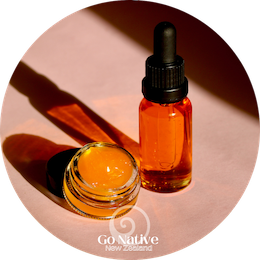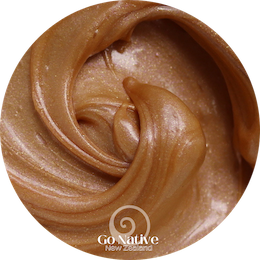Sapogel Q
02382
Exfoliants/Thickeners, Emulsifiers/Solubilisers
02382
Exfoliants/Thickeners, Emulsifiers/Solubilisers
|
INCI |
Glycerin, Aqua, Quillaja Saponaria wood extract, Sapomaria officinalis leaf/root extract |
|
Certification |
COSMOS approved, NATRUE approved |
|
Appearance |
Viscous brown liquid |
|
Solubility |
Oil and small amounts of water based ingredients (max 4%) |
|
pH range |
4 - 6.5 |
|
Usage rate |
15 -25% |
|
Vegan |
Yes |
|
Palm oil |
No |
|
Animal tested |
No |
Notes from the Go Native NZ team on working with Sapogel:
Here at GN NZ HQ we like to personally test new products before choosing to stock them, to work through any possible difficulties that may arise when working with the product so we can help customers troubleshoot.
Here is what we have found:
Usage rate for Sapogel Q ranges from 15% - 25%. Contrary to what you would think, less Sapogel Q results in a firmer gel and more creates a runnier gel. So 15% = firm while 25% = a viscous, honey-like texture (works well in a lotion pump). (See photos for reference.)
Different carrier oils will create different consistencies, even at the same Sapogel Q percentage. Fo example, castor oil, which is very thick, creates a very thick gel even using 25% Sapogel Q.
Different carrier oils create different clarity in the gel, and obviously, different colour.

Basics formulation method
Electric whisk
Ideally Sapogel Q would be used with an overhead stirrer, however we don’t have any equipment that heavy duty here and we suspect that most of our casual DIY customers don’t either, so we wanted to see if we could make it work without the use of one.
A standard electric whisk works a treat for larger batches. One attach one prong and use a low setting to start with. Add a small amount of oil at a time and make sure it is entirely incorporated before adding more.
Working with Sapogel Q - By hand
Hand blending
We also tried simply hand blending the formula with a mini silicone spatula and this was actually very successful. We were able to match a much smaller batch this way, 50g rather than 250g with the blender, and because the batch was much smaller the amount of oil that needed to be added slowly was much less overwhelming. (I will admit my arm still got quite tired but as it’s a cold process at least I could take breaks!) We added one pipette worth of oil at a time and vigourously stirred it until it was combined, and continued this until all the oil was incorporated. It never curdles and in this manner it felt like we were much more in control of the process than with the blender.
In summary, for small batches we recommend hand blending, for larger batches the electric whisk is very useful (and saves your arms quite a lot of discomfort!).
Working with Sapogel Q - By hand
Troubleshooting
If you add too much oil before the Sapogel Q can fully incorporate it it will cause the gel to split. This can be very frustrating (and happened to us many times as we were testing) but you can come back from it. Let the formula sit for as long as it needs to (we let ours sit overnight) until it separates fully, with the oil on top. Then pour/pipette out as much of the oil as you can and transfer is back into a separate beaker. Stir what is left and with the excess oil gone it should start to gel up again now that it’s not overwhelmed. Then simply start adding the oil back, one pipette at a time, stirring and allowing to recover between each addition. Using this method you should be able to bring it back to a smooth gel.
Check out our formulas using Sapogel Q
 |
 |
 |
||
| Liquid gold gel serum | Rose gold body shimmer | Passionfruit oil cleansing gel |
All our products are for external use only.